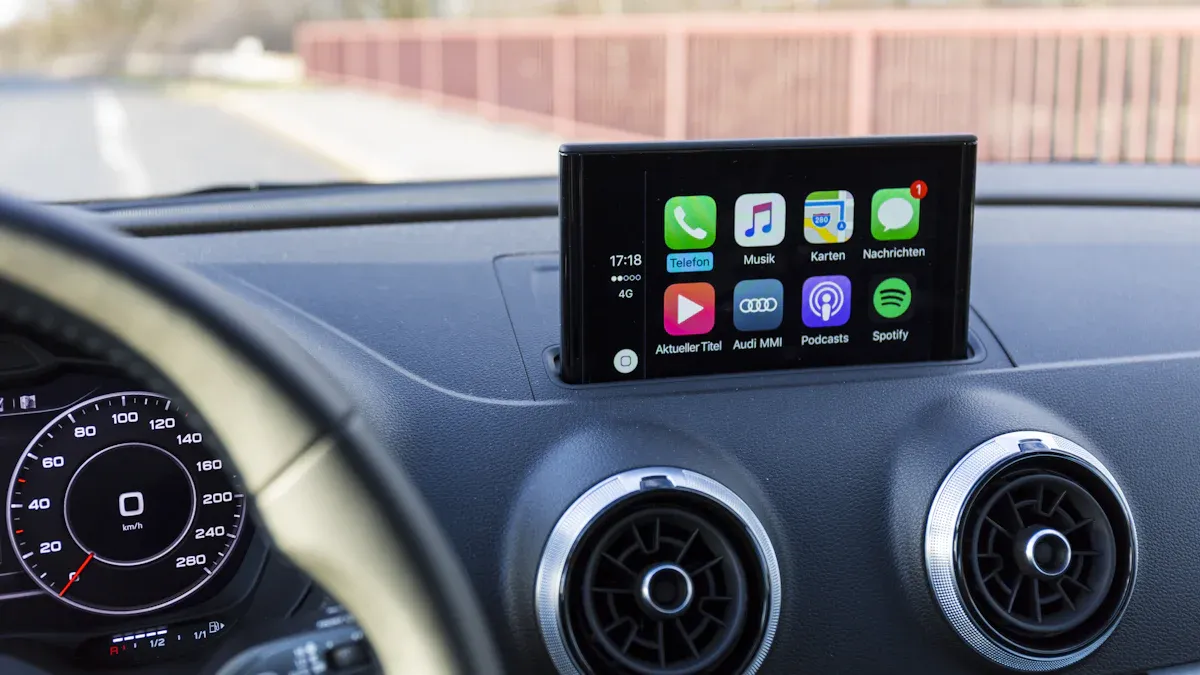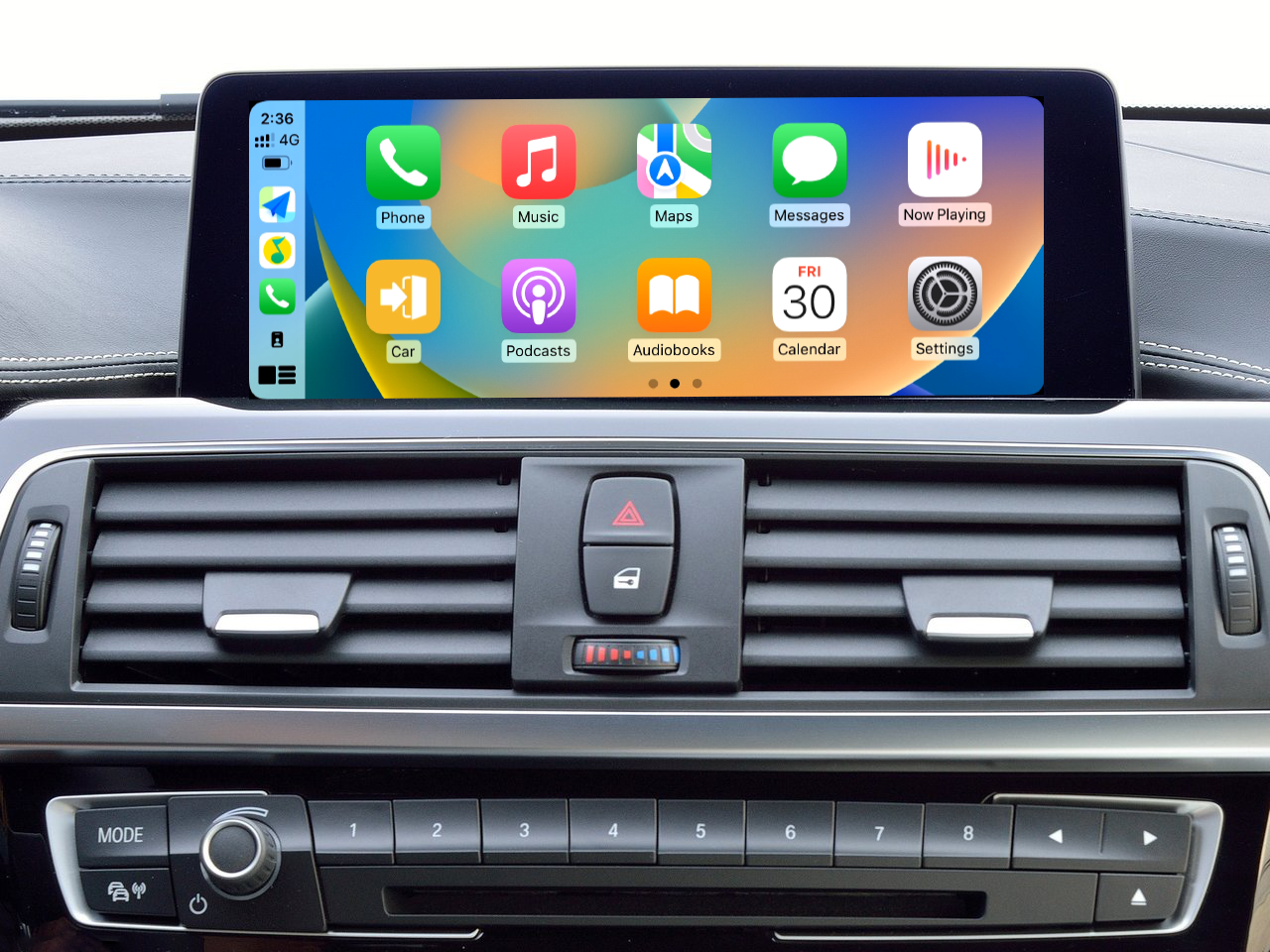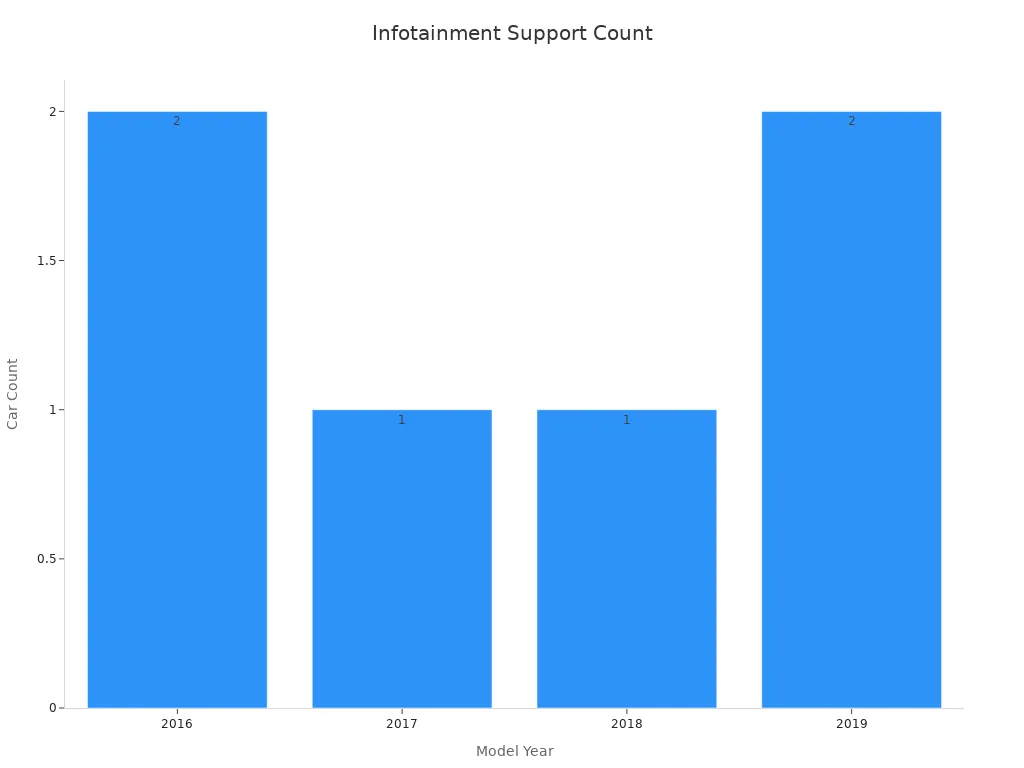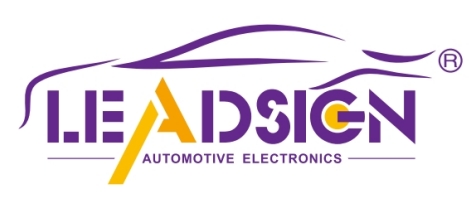Top Tips for Using an Apple CarPlay Adapter for Cars Without CarPlay

Do you have a car without Apple CarPlay built-in? Don’t worry—you can still use it with a carplay converter. This useful device connects your car and iPhone, allowing you to use maps, music, and messages on your car’s screen.
A wireless Apple CarPlay dongle makes it even easier. No more messy wires, just a smooth connection. With voice commands and hands-free control, you can stay focused on driving while enjoying the features.
Key Takeaways
Make sure your car and iPhone work with the CarPlay adapter. Check if your iPhone is supported and your car connects well.
Update your iPhone and adapter often. Updates fix problems and make things work better for easier driving.
Put the wireless CarPlay adapter in the right spot. Keep it away from metal and electronics to stop signal issues.
Installation Tips for Your CarPlay Converter

Check Vehicle and iPhone Compatibility
First, check if your car and iPhone work with the adapter. Most iPhones, from iPhone 5 to newer ones, support CarPlay. Some cars, like Mitsubishi, may need extra settings for better use. If you have a BMW, Skoda, or a Sony head unit, confirm compatibility. These might not work with CarPlay. For cars with built-in CarPlay, iPhones from 6 and up usually work fine.
Prepare Your Tools and Workspace
Get ready before starting. Find a clean, bright spot to work. Gather the carplay adapter, your iPhone, and the car manual. Keep a USB cable nearby if your adapter uses wired or wireless modes. Use a microfiber cloth to clean the dashboard before setup.
Follow the Manufacturer’s Setup Instructions
Each adapter has its own guide. Read it carefully. Plug the adapter into the car’s USB port. Connect your iPhone using Bluetooth or Wi-Fi, based on the adapter type. Some models, like the LEADSIGN BMW CIC Kit, have detailed steps. Follow them closely to avoid mistakes.
Test the Wireless CarPlay Connection
After setup, test the connection. See if your car screen shows your iPhone apps. Check if Maps and Music work well. Test the connection while driving. Things like call clarity and app speed matter. For example, calls should stay clear with RTT under 400ms. If all works fine, you’re all set!
Optimizing Your Wireless CarPlay Experience

Keep Your iPhone and Adapter Firmware Updated
Updating your iPhone and adapter is very important. Updates fix problems and make things work better. They also help with newer car models. Many people say updates stop connection issues. They also improve how well the adapter works. Check for updates on the maker’s website or app. For your iPhone, go to Settings > General > Software Update. Updates keep your system safe and running smoothly.
Adjust Bluetooth and Wi-Fi Settings for Stability
Wireless CarPlay uses Bluetooth and Wi-Fi to connect. Make sure both are on and working well. Turn off other devices that might mess up the signal. If you see delays or drops, reset your iPhone’s network settings. Go to Settings > General > Reset > Reset Network Settings. A good connection makes driving more fun and stress-free.
Position the Wireless CarPlay Dongle for Best Signal
Where you put the dongle matters for good performance. Keep it in a clear spot, away from metal or electronics. Placing it near the center console often works best. Some advanced adapters use smart tech to boost signals. But placing it right helps you get the best results.
Use Siri and Voice Commands for Hands-Free Control
Siri makes using CarPlay easy and safe. Ask Siri to play songs, send texts, or give directions. You don’t need to take your hands off the wheel. Voice commands make driving simpler and safer. Studies show they help drivers stay focused and make tasks easier.
Troubleshooting Your CarPlay Converter
Fixing Connection Drops or Pairing Problems
If your CarPlay dongle disconnects or won’t pair, don’t panic. First, check if your car and iPhone work with the adapter. Compatibility issues often cause connection problems. Update your iPhone’s iOS and the adapter’s firmware. Old software can lead to pairing troubles.
Reduce signal interference by turning off nearby Bluetooth devices. If it still doesn’t work, reset the adapter and reconnect it. For tough problems, check for updates from Apple or your car maker. These updates improve compatibility and fix connection drops.
Solving Audio or Video Delays
Audio or video delays can be annoying. Place the dongle in a clear spot, away from metal or electronics. If delays continue, check your iPhone’s settings. Reset the network settings by going to Settings > General > Reset > Reset Network Settings. This often fixes sync problems and improves performance.
Resetting the Adapter to Default Settings
A reset can fix many issues. Find the reset button on the adapter or check the manual for help. After resetting, reconnect your iPhone and test it. This clears glitches and restores the adapter to its original state.
Checking USB Port for Data Support
Not all USB ports are the same. If the adapter doesn’t work, check if the port supports data transfer. Some ports only provide power, which won’t work for CarPlay. Look at your car’s manual to find the right port. Using the correct USB port ensures a stable connection.
Compatibility and Performance Insights
Supported Car Models and Infotainment Systems
Wireless Apple CarPlay adapters work with many cars and systems. Popular brands like Audi, BMW, Ford, Toyota, and Volkswagen support wireless CarPlay. Some older cars may need extra hardware or might not work at all.
Here’s a quick list of supported systems:
Car Brand | Year | Model Name | System Name |
|---|---|---|---|
FCA | 2016 | Select Vehicles | UConnect |
Subaru | 2017 | Impreza | N/A |
BMW | 2016 | Various Models | Standalone Option |
Toyota | 2019 | Avalon | N/A |
Mazda | 2018 | Mazda6 | MZD-Connect |

Before buying an adapter, check if it works with your car.
Compatible iPhone Models and iOS Versions
Most iPhones with iOS 10 or newer work with Apple CarPlay adapters. Models from iPhone 5 to the latest versions are supported. Wireless adapters need iPhones with Bluetooth and Wi-Fi. Update your iOS often to stay compatible with new features and cars.
Factors That Impact Wireless CarPlay Performance
Several things can affect how well wireless CarPlay works:
Connection Stability: Strong Bluetooth and Wi-Fi reduce disconnections.
Audio and Video Quality: Clear sound and visuals improve your experience.
Latency: Fast response times make navigation and voice commands smoother.
Placement: Putting the adapter in the right spot boosts signal strength.
Tips for Maintaining Long-Term Performance
To keep your adapter working well:
Update the adapter’s firmware often.
Clean the adapter and USB port to avoid dust.
Keep the adapter away from metal objects that block signals.
Use a good-quality USB cable for wired setups.
Follow these tips to enjoy a smooth Apple CarPlay experience for years.
Using your Apple CarPlay adapter well starts with good setup. Regular updates help it work better. A simple plug-and-play adapter makes setup easy. Fixing common problems keeps it running smoothly. Things like start-up time and connection speed get better with updates. Restarting devices can also help fix issues.
Choosing a wireless CarPlay adapter removes the need for cables. This makes driving safer and easier. Without wires, you can focus on driving. You still get access to maps, calls, and music. A wireless adapter makes driving more fun and stress-free.
FAQ
What can you do if your CarPlay adapter won’t connect?
Make sure Bluetooth and Wi-Fi are turned on. Restart both your iPhone and the adapter. If it still doesn’t connect, try updating the firmware or resetting the adapter.
Can a wireless CarPlay adapter work with every car?
Not every car works with wireless CarPlay. Check your car’s system and the adapter’s compatibility list before buying.
How can you update your adapter’s firmware?
Go to the maker’s website or app. Download the newest firmware. Follow the steps to install it. Updates fix bugs and make the adapter work better.
See Also
Key Considerations When Choosing an Apple CarPlay Adapter
A Comprehensive Guide to Apple CarPlay Adapters Explained
Must-Know Advice for Selecting a Wireless CarPlay Adapter

